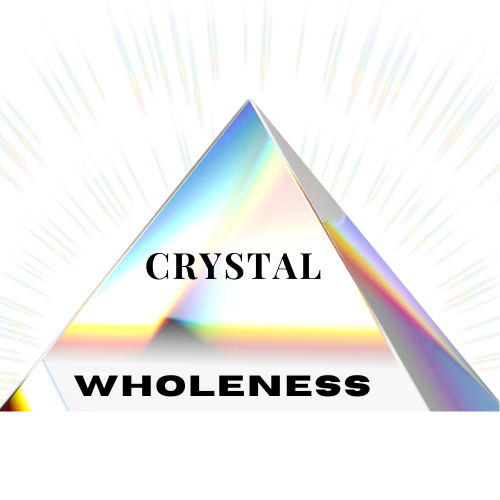The Benefits of Lavender
By now, lavender is a common household name widely known for its relaxing benefits and strong fragrance. Many flock to its powerful scent and love its aroma for beauty products, massages, and self-care. However, lavender is highly versatile and is often referred to as the “Swiss Army knife” of essential oils due to its over 1,000 known uses. Honestly, I could write a book on lavender and its benefits, but I’m condensing all of that awesome info in an overview here so you get the rundown and inspiration to start incorporating it into your own wellness routine.
Lavandula angustifolia
Botanical Family: Lamiaceae or Labiatae (mint)
Origin: Utah, Idaho, France
Extraction Method: Steam distilled from flowering top
ORAC Rating: 3,669
Plant: Lavandula angustifolia is the classic lavender that most people are familiar with. It can also be found on the market as Common Lavender, French Lavender (when it comes from France), True Lavender, or Lavender. You may also see it labeled as Lavandula officinalis. This little greyish purple flower is known for its sweet floral aroma. The genus Lavandula is in the mint family.
Lavender is an aromatic perennial evergreen shrub. Its woody stems bear lavender or purple flowers from late spring to early autumn, although there are varieties with blossoms of white or pink. Lavender is native to the Mediterranean, but now cultivated in cool-winter, dry-summer areas in Europe and the Western United States.
Historical Uses: The use of Lavender goes back thousands of years, with the first recorded uses by the Egyptians during the mummification process. Both the Greeks and the Romans had many uses for it, the most popular being for bathing, cooking, and as an ingredient in perfume.
Lavender was used as an after-bath perfume by the Romans, who gave the herb its name from the Latin lavare, to wash.
During the Great Plague of 1665, grave robbers would wash their hands in a concoction called Four Thieves Vinegar, which contained lavender, wormwood, rue, sage, mint, and rosemary, and vinegar; they rarely became infected.
English folklore tells that a mixture of lavender, mugwort, chamomile, and rose petals will attract sprites, fairies, brownies, and elves.
There is a long-documented history of lavender use dating back to ancient Egypt, Greece, and Rome with the use of the oil being well documented for over 2300 years!
Traditional Uses: The French scientist Rene’ Gattefosse’ was the first to discover lavender’s ability to promote tissue regeneration and speed wound healing when he severely burned his arms in a laboratory accident and it developed a severe infection. Today, lavender is one of the few essential oils to still be listed in the British Pharmacopoeia.
English lavender, or Lavandula angustifolia, is not actually native to England but to the Mediterranean.
Lavender flower is a favorite for its sweet, relaxing, floral aroma, and the flowers and leaves have a long history of use in traditional western herbalism.
Dried lavender flowers can be added to potpourri blends, used as a cooking or baking spice, and incorporated into body care recipes.
Cooking/Food Uses: As a spice, lavender is best known as an important aspect of French cuisine and is an integral ingredient in herbs de Provence seasoning blends.
May be used on its own to give a floral flavor to desserts, meats, and breads
The flowers can be layered within sugar to infuse it with its distinctive aroma for use in cookies and candies
An estimated 10% of the population interprets lavender to have a soapy and unsavory flavor. For this reason, it may be wise to exercise caution while using lavender as a flavoring agent, aka LESS is more.
Fragrant Influence: Calming, relaxing, and balancing, both physically and emotionally. Lavender has been thought for centuries to arouse passions as an aphrodisiac and is still one of the most recognized scents in the world.
As Essential Oil:
Has been used for: Pre-menstural conditions, asthma, bronchitis, tumors, hair loss, dandruff, burns (cell renewal), sunburns, headaches, insomnia, and countless other skin and dermatological issues
Constituent Actions: antiseptic, analgesic, anti-tumoral, anticonvulsant, sedative, anti-inflammatory
Cleansing cuts and wounds
Prevents the build up of sebum, a skin oil that bacteria feed on
Has been clinically evaluated for its relaxing effects
Personally, lavender is one of my favorite essential oils to use and I find it much more convenient than trying to get recipes right. That flavor truly is potent and can easily take on that soapy taste. Blech! However, in essential oil form, it is powerful for the limbic system at helping to relax the fight-flight-or-freeze response and is used in Aroma Freedom as part of the Memory Release Blend.
It is one oil I keep in stock for personal daily use as well as in my holistic herbal Emergency Preparedness kit.
My favorite way to utilize this amazing oil is in a roller blend I created utilizing lavender essential oil with dried organic lavender flowers and a combo of amethyst and clear quartz crystal chips for adding potency. You are welcome to recreate my roller blend for yourself, or you can purchase your own Lavender roller personally made by me in the Shop. I have also tweaked the recipe slightly and added it to my beautiful dropper bottles so I can easily use as a refreshing and relaxing bath oil or add to my RELAX bath salts for extra POW! Grab yours here.
*This information has not been evaluated by the Food and Drug Administration. This product is not intended to diagnose, treat, cure, or prevent any disease. For educational purposes only.

